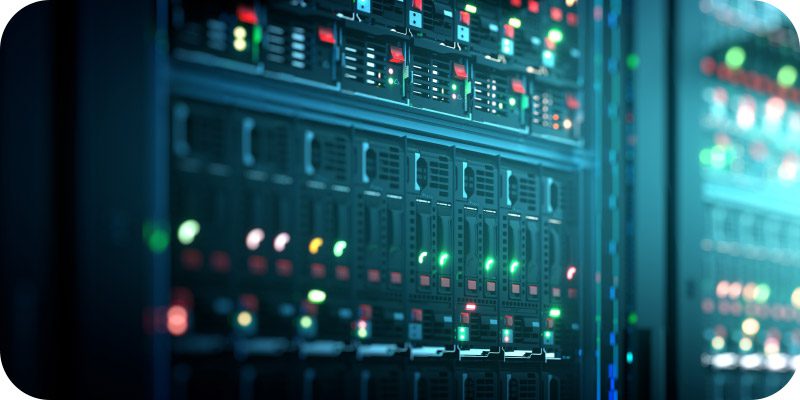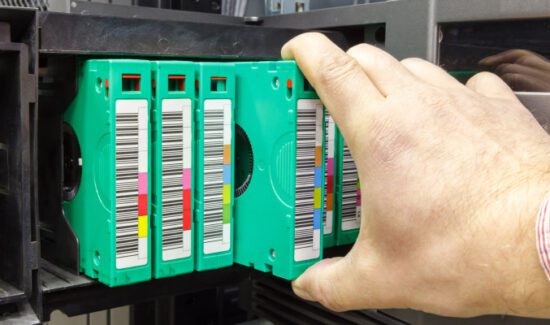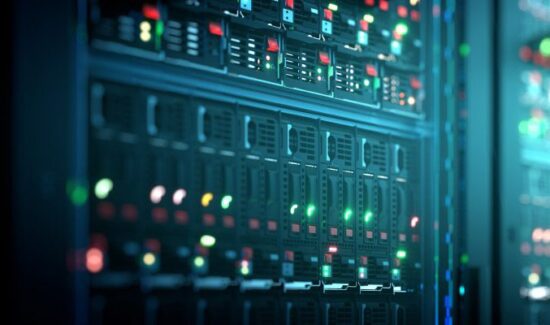What the AI Impact on Data Center Jobs Looks Like Right Now


Solutions Review’s Executive Editor Tim King highlights the overarching AI impact on data center jobs, to help keep you on-trend during this AI moment.
It’s no secret in 2025 that artificial intelligence (AI) is reshaping the data center landscape. From how data centers are designed and run to the skills required to operate them, AI is rewriting the playbook. What’s less obvious—but critically important—is how this transformation is affecting the human roles inside these massive physical and virtual infrastructures. Automation, intelligent monitoring, and predictive maintenance are reducing the need for hands-on labor in many traditional tasks, while simultaneously elevating demand for a new breed of hybrid-skilled professionals who can manage both machines and models.
To help you understand these changes and stay ahead of the curve, the Solutions Review editors have analyzed how AI is disrupting data center jobs, what current professionals can do to remain essential, and how organizations can restructure their workforce strategies to future-proof their operations.
Note: These insights were informed through web research using advanced scraping techniques and generative AI tools. Solutions Review editors use a unique multi-prompt approach to extract targeted knowledge and optimize content for relevance and utility.
AI Impact on Data Center Jobs: How Has AI Changed the Data Center Workforce?
AI is revolutionizing the way data centers operate, making them smarter, leaner, and more autonomous. What was once a labor-intensive domain—filled with cable pulling, rack stacking, temperature monitoring, and routine diagnostics—is now increasingly defined by software, robotics, and intelligent decision-making. The impact on jobs is profound: repetitive roles are declining, while demand is soaring for AI-savvy technicians, automation engineers, and infrastructure strategists.
Predictive Maintenance and Intelligent Monitoring
AI-powered systems can now detect anomalies in power consumption, thermal patterns, and hardware health long before they turn into failures. Tools like Schneider Electric’s EcoStruxure and NVIDIA’s AI Infrastructure Management (AIM) use machine learning to predict and prevent downtime, automatically schedule component replacements, and optimize load balancing.
This dramatically reduces the need for reactive troubleshooting—a long-standing pillar of data center technician roles. Instead of hunting for faults, human workers are increasingly responsible for validating AI decisions, configuring predictive algorithms, and interpreting real-time dashboards. The break/fix model is giving way to a supervise/optimize model.
Autonomous Infrastructure and Zero-Touch Provisioning
Provisioning new resources—whether physical servers or virtual instances—used to require manual setup, cable management, BIOS configuration, and software installation. Now, AI-enabled orchestration platforms can provision entire workloads with zero-touch, using policy-based triggers and intent-driven design.
This shift threatens the traditional entry point into data center work: the hardware generalist. As rack-and-stack roles decline, the value moves to those who can build the automation logic, maintain provisioning templates, and ensure compliance in software-defined infrastructure (SDI). Infrastructure as Code (IaC) isn’t just a DevOps skill anymore—it’s part of the new baseline for physical infrastructure management.
AI-Augmented Energy and Cooling Optimization
Power and cooling have always been among the biggest cost centers in data center operations. Today, AI is optimizing airflow, temperature, and energy use at granular levels. Google famously used DeepMind to reduce data center cooling bills by 40%—a proof point that has since spurred a wave of similar AI deployments across hyperscalers and colocation providers.
This means fewer technicians doing routine thermal audits and HVAC checks—and more roles focused on integrating AI with building management systems (BMS), analyzing energy telemetry, and setting AI governance guardrails. Sustainability mandates are also giving rise to green infrastructure roles that combine AI insight with environmental impact assessments.
Robotic Automation and Remote Hands
From autonomous inventory drones to robotic arms handling physical swaps, AI-powered robotics are reducing the need for humans on the floor. In edge environments and remote facilities, these tools are becoming essential for managing distributed data centers at scale without full-time onsite staff.
This accelerates the need for hybrid roles—those who can manage robotic workflows, interpret sensor data, and interface with centralized AI monitoring systems. Field service techs must evolve into remote systems managers, capable of guiding or auditing robotic processes rather than executing them manually.
A 2024 Uptime Institute report revealed that 51% of data center operators using AI-driven predictive maintenance tools reduced unplanned downtime by more than 30%, while 47% planned to reduce their hands-on operational staff within five years. Yet 69% reported an acute shortage of talent capable of managing AI-driven infrastructure—highlighting the urgent need for upskilling.
The Emergence of AI-Era Data Center Roles
New roles are materializing fast. We’re seeing titles like “AI Infrastructure Operations Engineer,” “Data Center Automation Lead,” and “Digital Twin Technician.” These positions blend knowledge of physical infrastructure with expertise in AI systems, simulation modeling, and real-time optimization. Some roles are even moving into the realm of AI training support—where infrastructure engineers assist in building or maintaining the data center environments AI models rely on.
At the enterprise level, expect a shift from siloed NOC (Network Operations Center) and facilities teams toward integrated, software-defined operations squads. These teams use digital twins, real-time monitoring, and AI-enabled alerts to ensure uptime, security, and cost efficiency across hybrid and multi-cloud environments.
But caution is warranted: many of these new roles are transitional. As AI platforms get smarter and more user-friendly, even highly technical roles will require increasing business context and cross-functional fluency. The real long-term differentiator will be systems thinking—understanding how physical and digital infrastructure co-evolve and how to design environments that are resilient, scalable, and sustainable.
Upskilling for the AI-Enabled Data Center
If your career is rooted in data center operations, now is the time to modernize your toolbox. The classic skills—power calculations, hardware swaps, rack layout design—are not obsolete, but they’re no longer enough on their own. Instead, focus on:
AI and automation fluency: Understand how AI is used in monitoring, predictive maintenance, and provisioning. Learn to manage AI-driven systems and interpret their recommendations.
Software-defined everything (SDx): Master SDN, SDS, and SDI concepts. The future is programmable infrastructure, and your ability to script, automate, and orchestrate will be critical.
Infrastructure observability and digital twins: Learn how to work with telemetry systems, visual dashboards, and modeling environments that simulate infrastructure performance at scale.
Sustainability and energy governance: With regulatory and ESG pressures rising, roles that intersect energy efficiency, carbon tracking, and AI-optimized operations will only grow more important.
Cross-domain communication: Data center operations now touch everything from cloud cost optimization to security posture management. Success will come to those who can connect the dots across disciplines.
For organizations, AI demands a rethinking of talent pipelines. The next generation of data center pros must be as comfortable writing scripts as they are swapping drives. Smart teams are blending facilities, IT, and DevOps skill sets to create adaptive “site reliability for infrastructure” teams.
AI Won’t Eliminate Data Center Jobs—But It’s Rewriting the Job Description
If there’s a central theme to the AI impact on data center work, it’s this: AI isn’t replacing people—it’s replacing repetitive effort. Human insight is still needed to design architectures, enforce policies, ensure sustainability, and connect infrastructure to business strategy. But the baseline skill set is shifting fast.
Over the next three to five years, legacy-only job roles will fade, and hybrid-skilled professionals will dominate. The ideal data center operator will be part technician, part software engineer, and part strategist. It’s a challenging transition—but also a huge opportunity for those willing to reinvent themselves.
Bottom line: AI will automate the routine, but not the resilient. If you want to future-proof your data center career, become the connective tissue between infrastructure, intelligence, and impact. The machines may run themselves—but they still need architects.





















